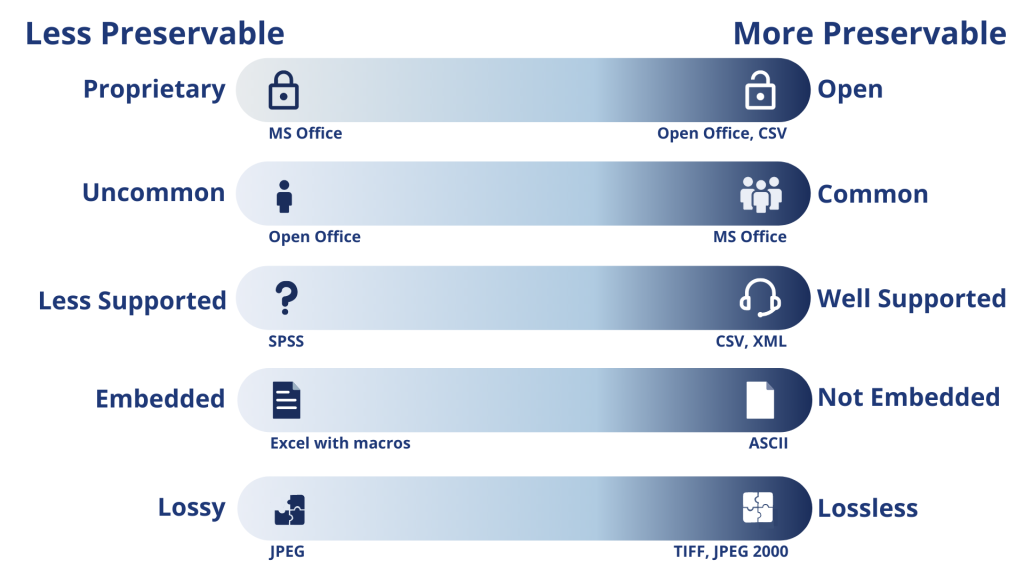Have you ever tried to open an older file only to find that you no longer had access to the software or that newer software mangled some of the file? What format your data is saved in is one of the most critical elements in how reusable your data will be in the future. The ability to preserve digital objects is dependent, among other things, on whether the file format used:
- Is openly documented (more preservable) or proprietary (less preservable);
- Is commonly used (more preservable) or has low use (less preservable);
- Is supported by a range of software platforms (more preservable) or by only one (less preservable);
- Contains embedded files or embedded programs/scripts, like macros (less preservable); and
- Is lossless data compression (more preservable) or lossy data compression (less preservable).

In many cases you may need to actively work with data in a proprietary format, or a format that can only be used with one type of software. Or, the instrument you work with may output to a proprietary format by default. However, when you consider what you will share and/or archive, consider exporting that data to a more open or widely supported format so that it may have the greatest utility in the future.